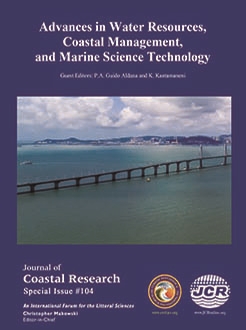Chen, L.F.; Xie, X.L., and Wang, W., 2020. The effect of fleet size, seaborne volume on BDI volatility in dry bulk shipping market. In: Guido Aldana, P.A. and Kantamaneni, K. (eds.), Advances in Water Resources, Coastal Management, and Marine Science Technology. Journal of Coastal Research, Special Issue No. 104, pp. 993–997. Coconut Creek (Florida), ISSN 0749-0208.
In this article, a method based on variational mode decomposition (VMD) and multiple linear regression (MLR) is developed for Baltic Dry Index (BDI) volatility. The original BDI series is decomposed into several independent intrinsic mode functions (IMFS) through VMD first. The long-term trend is obtained to represent the basic freight rate. MLR model is used to analyze the influencing factors of BDI volatility. It is found that seaborne volume is the main cause of the volatility of BDI when the shipping market is in equilibrium. If the market is in a recession, the volatility of BDI is mainly determined by fleet size. Oil price, GDP and CIP have a very small impact on the volatility of BDI. The results contribute to understand the systematic risk of shipping market.





